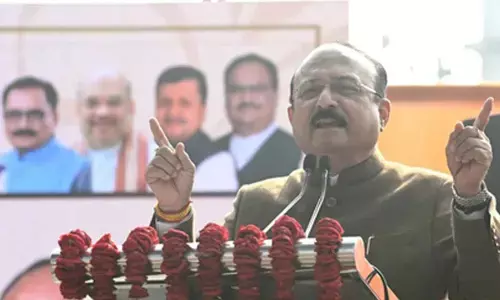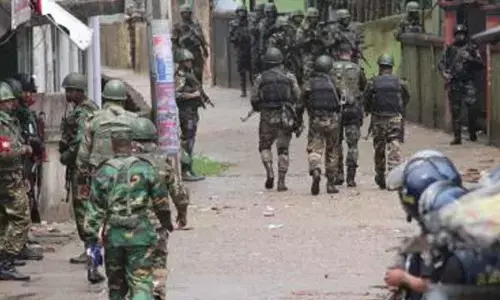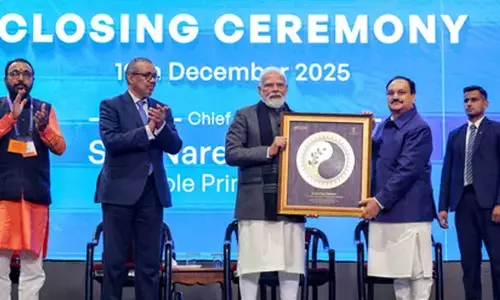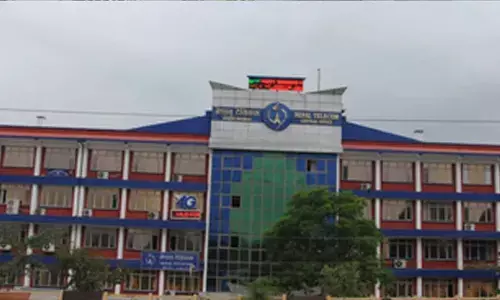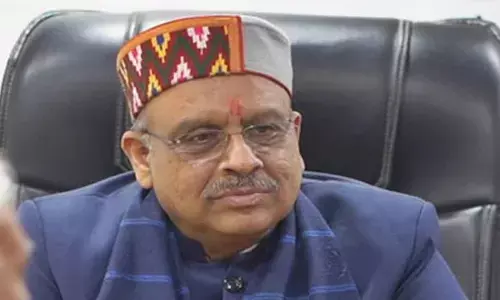Public Health Infrastructure in Bangaru Telangana

There are 4863 Sub-centers, 740 Primary Health Centers, 114 Community Health Centers, 31 Area Hospitals, 7 District Hospitals, 5 Mother and Child Care hospitals and 5 Teaching hospitals apart from 92 Urban Primary Health Centers in Telangana.
There are 4863 Sub-centers, 740 Primary Health Centers, 114 Community Health Centers, 31 Area Hospitals, 7 District Hospitals, 5 Mother and Child Care hospitals and 5 Teaching hospitals apart from 92 Urban Primary Health Centers in Telangana. Telangana Vydya Vidhana Parishad (TVVP) hospitals cater to the secondary health care system. There are 102 hospitals under the TVVP control catering Maternity & Child Health services, besides General Medicine, General Surgery, Ophthalmology, Paediatrics, Orthopaedics, Dermatology, ENT, etc.
Some of the major initiatives taken by the Government include Arogya Lakshmi scheme and upgradation oup gradationpublic health infrastructure.
Arogya Lakshmi:
In order to improve nutritional status among pregnant and lactating women and to reduce low birth weight, IMR, malnutrition among children below 6 years, the Government launched Arogya Lakshmi programme on 1st Jan, 2015. Under this programme 16 eggs, per month are provided to the children in the age group of 7 months to 3 years, along with eggs, wheat, milk powder, red gram, sugar and oil. Children between the age group of 3 and 6 years are provided daily with one egg, rice, dal, curries and snacks. There are about 10.4 lakh children between 7 months to 3 years age group, 7.4 lakh children between 3 years to 6 years and 4.7 lakh pregnant and lactating women availing the programme.
Initiatives to bring down MMR and IMR:
Government has taken number of initiatives to bring down MMR and IMR, which include, issuance of Mother and Child Health Cards to all pregnant women and children, developed a web portal for tracking of mothers and children health status, establishment of 19 Special New Born Care Units (SNCUs), 61 Newborn Stabilization Units (NBSUs) and 581 New Born Care Corners (NBCCs) to strengthen the neo-natal care services.
Other important schemes targeted for promotion of the institutional deliveries includes (i) 66 Comprehensive Emergency Obstetric and Neo-natal Care (CEMONC) Services. (ii) 340 PHCs operating 24x7 Mother & Child Health Care Centres. (iii) Janani Suraksha Yojana (JSY) Scheme and Sukhibhava scheme - with a cash incentive of Rs.1000 is given to promote deliveries in public institutions in rural areas. During 2015-16 about 1.06 lakh women were benefitted under this scheme so far. (iv) Janani Sishu Suraksha Karyakram (JSSK) for providing free cashless deliveries and care to sick new born till one year after birth at all public health institutions. During 2015-16, 94,044 women were benefitted under this scheme so far. (v) Accredited Social Health Activist (ASHA) - for creating awareness to the community on nutrition, basic sanitation and hygienic, practices. There are 26,028 ASHAs positioned in the state.
Child Immunization:
The universal immunization programme was started to achieve 100 percent immunization and to reduce the mortality and morbidity among infants and young children due to vaccine-preventable diseases such as tuberculosis (T.B.), diphtheria, whooping cough, tetanus, polio and measles., 3.9 lakh children received immunization during 2015-16 so far. Other important scheme implemented for universal immunization, is Mission Indradhanush. The State has achieved best performance in the country.
Tribal Health Services:
There are 599 Sub-Centres, 86 PHCs, 10 CHCs, 6 Area Hospitals and 10 Birth Waiting Homes providing health services operating in ITDA areas. 2987 Community Health Workers are hired in the tribal areas to provide extended health services.
National Health Mission:
National Health Mission is to mainly assist the efforts of the State to provide various health services. Apart from the National Rural Health Mission, the Government of India has launched National Urban Health Mission (NUHM) in 2013-14 as Sub-Mission of NHM with an aim to improve the health status of the urban population. Out of 69 existing Urban Local Bodies (ULBs), 42 (with more than 50000 populations) are covered under NUHM and remaining ULBs are covered by NRHM.
Arogyasri Scheme:
The scheme aimed at providing good quality health care services to the poor families and to assist them from catastrophic health expenditure. The Scheme is a unique PPP model in the field of health, tailor made to the health needs of the poor patients and provides end-to-end cashless services for identified diseases under secondary and tertiary care through a network of service providers from Government and private sector. During 2015-16 about 2 lakh therapies have been approved so far.
The Government has initiated a Scheme, Employees Health Scheme and Journalists Health Scheme. Under the Scheme, Government employees, pensioners and their family members, working and retired journalists along with their families, are being provided cashless treatment through Aarogyasri Health Care Trust.
Upgradation of Health Infrastructure:
Upgrading the existing facilities has been the priority of the government. In this direction, Government has sanctioned Rs.74 crore during 2015-16, for upgradation of TVVP Hospitals under for improving the infrastructure facilities. Details are given in Table below.
Table: Details on upgradation of existing hospitals of (TVVP)
| Name of the Hospital | Upgradation (No.of beds) |
| CHC, Jogipet , Medak Dist. | 50 to 100 beds |
| DH, Nalgonda, Nalgonda Dist. | 250 to 400 beds |
| CHC, Vikarabad, R.R. Dist. | 50 to 100 beds |
| CHC, Narsapur, Medak Dist. | 30 to 100 beds |
| AH,Bhadrachalam, Khammam Dist. | 100 to 200 beds |
| CHC, Mulugu, Warangal Dist. | 50 to 100 beds |
| CHC, Asifabad Adilabad Dist. | Additional infrastructure facilities |
An amount of Rs.25.00 crores was exclusively sanctioned and allotted to District Hospital, King Koti, Hyderabad for upgradation and strengthening of the hospital with civil works and latest equipment.
In order to improve to the medical education and to cope up with the latest demands in the field, Government has decided to start Government Medical Colleges in each District, where there is no medical college. A Government Medical College has been established in Mahbubnagar District.









